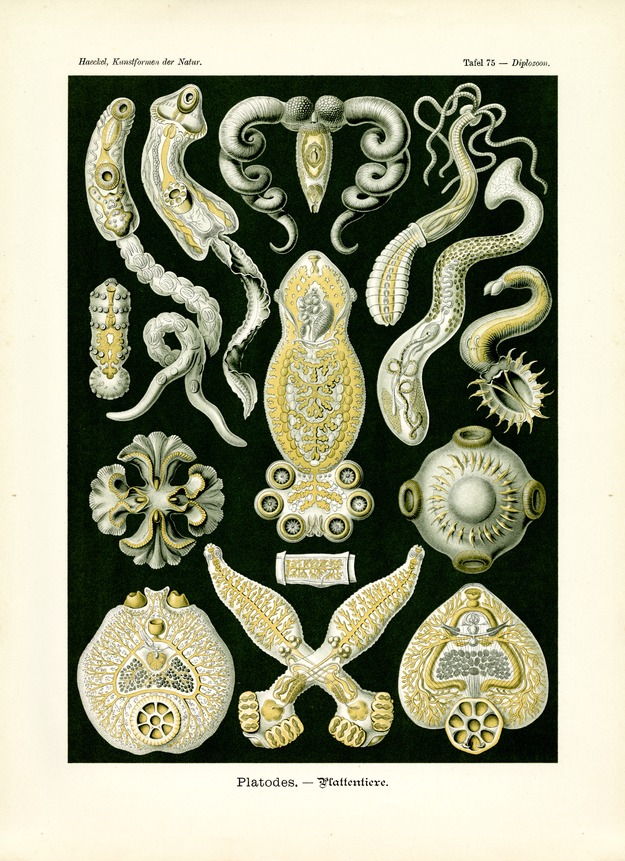Translation of the original German introduction by Ernst Haeckel:
Phylum of Platodes (Plattentiere); - or Plathyhelmidnthes (Plattwürmer); - class of Trematodes (Saugwürmer); - and Gestades (Bandwürmer).
The phylum of ‘disc animals’ (Platodes) is usually classed with the varied and composite group of “worms”, it distinguishes itself, however, from real worms (Vermalia, plate 23, 32 and 33) by the lack of a body cavity and an anus; the intestine has only one opening, just as in Cnidaria. Three classes of animals with a multiplicity of species belong here: free-living ‘swirl-worms’ (Turbellaria), the two parasitic classes of flukes (Trematodes), and of tapeworms (Gestades). In all of them the flatly pressed, leaf-shaped body is of a most simple structure, without limbs. In the oldest phylum group, Turbellariae that are living in water, the soft skin is covered with a glistening cover; in the two parasitic classes the latter got lost; these classes have obtained adhesion organs, ‘suction cups’ and ‘clamp-hooks’ through adaptation to the lifestyle of parasites. Tapeworms, living in the intestinal tracts of other animals, have therefore lost their own intestinal canal (heirloom of their Trematodes ancestors). The development of these parasitic ‘disc-animals’ is most peculiar, usually connected to migration through two different ‘living-in-animals’ or hosts, often with alteration of generation. Flukes (fig. 1-9) of the order of Polystomeae (fig. 4-9) usually present direct development (Hypogenesis), in the order of Distomeae (fig. 1-3) in most cases alteration of generation (metagenesis); the free swimming larva of the latter variety move with the help of a ‘rudder-tail’ (“tailed animals”, Gercariae). Tapeworms (fig. 10-14) are rarely simple (Monocestoda, fig. 10); they usually form strings composed of many limbs (“string-worms” or Syncestoden, fig. 11-14); each limb (Proglottide) corresponds to a Monocestodum.
Translation by VR Translators Bangalore
We've scanned the original lithography at 1200dpi on the Epson A3 scanner of A3 scanner huren. You can download a 400dpi JPEG here.
